IO-Link For JVL's Integrated Servo & Stepper Motors
Robots have been used in manufacturing for decades, but their popularity has been increasing drastically as more companies look to take advantage of the numerous benefits they provide. The emergence of collaborative robots (cobots) in recent years has given users another option in addition to industrial robots. This has prompted many to ask what are the differences between these types of robots and when should they be used?
What are Industrial Robots?
The International Federation of Robotics (IFR) defines industrial robots as an automatically controlled, reprogrammable, multipurpose manipulator programmable in three or more axes, which can be either fixed in place or mobile for use in industrial automation applications. They are designed to work autonomously and away from humans. There are 4 common types of industrial robots: Articulated, Cartesian, Parallel, and SCARA robots.
PRODUCTS
PRODUCTS
MANUFACTURERS
AUTOMATION SOLUTIONS
INFO CENTER
ABOUT US
SCHEDULE A
DEMO
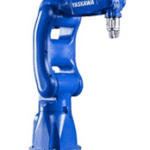
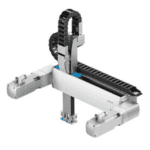

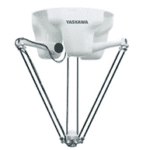
What are Cobots?
A cobot is a type of robot that is designed to work safely in a shared space with humans. Cobots are built with lightweight materials, rounded edges, and minimal pinch points. They are very popular for automating repetitive, mundane, and un-ergonomic tasks.
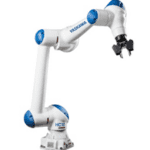
Motoman HC-10/DT
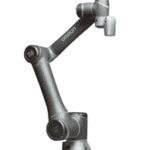
OMRON TM Series
Pros
Able to run at very high speeds with less joint bind restrictions than cobots.
More capabilities including better control, features, and flexibility.
More than twice as repeatable and precise as cobots (±0.02mm vs. ±0.05mm).
Much larger selection of robots with larger reaches and payloads.
Vast integration capabilities with upstream and downstream equipment.
Ability to use welding interface, painting interface, multi-robot fleet management interface, pre-programmed macros, etc.
Cons
Robots often need to be permanently and securely mounted due to their speed, mass, and accelerations creating more challenges to transport and deploy at different stations.
More features makes programming and setup slightly more complex. However, programming environments like Yaskawa Motoman’s Smart Pendant are very simple and intuitive.
No built-in camera, but Yaskawa Motoman and Omron Adept have vision packages that make vision integration very manageable.
More space required when factoring in guarding, controller, safe distance stop calculations, and robot base.
No hand-guided teaching as there is with cobots.
Cobots: Pros & Cons
Pros
Ability to work directly with humans in a shared workspace.
Simple programming environment that is becoming more and more capable.
Ability to seamlessly switch in and out of collaborative mode to achieve higher cycle time and throughput when there are no humans in reach of robot, but will slow down to a safe speed when a human presence is detected.
Lightweight, easy to move around and deploy at different workstations.
Hand-guided teaching makes it quick and easy to position a cobot in space. No need to fully understand robot coordinate systems.
Equipped with force/torque sensing joints that limit torque when sensing an unsafe situation.
Cons
Slower cycle times than industrial robots, even when not operating in collaborative mode.
Not yet capable of conveyor tracking/vision-guided conveyor tracking.
Complex programs are cumbersome and time consuming in comparison to industrial robots.
Strict safety assessments still required when cobot/human share same work environment.
SO WHICH IS THE RIGHT CHOICE?
The key takeaway is that as technology has advanced, the differences between industrial robots and collaborative robots have shrunk, becoming more of a blurred line between the two. With the right safeguarding equipment, an industrial robot can be used collaboratively. Additionally, just because a collaborative robot is used doesn’t automatically mean the process is safe or risk-free. There are certain capabilities that industrial robots bring to the table that cobots aren’t able to achieve, and vice versa. There isn’t one ‘right choice’, there are many questions regarding your application, processes, and organization to address when choosing the best robotic solution.
Mechatronic Solutions is a leading distributor of robots and cobots from Omron, Yaskawa Motoman, and Mecademic. With a robust offering of collaborative, multi-axis, miniature 6-axis, mobile, parallel, and SCARA robots, we have options for any application. Mechatronic Solutions offers proof-of-concept testing with robotics working with other automation equipment including simulation capabilities for your application. Contact us to schedule a demo or call us at 763-447-3407.
